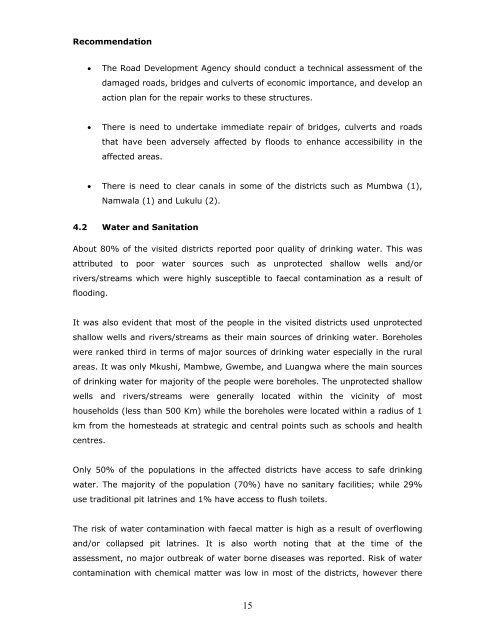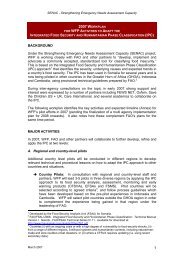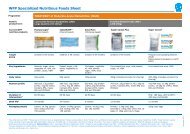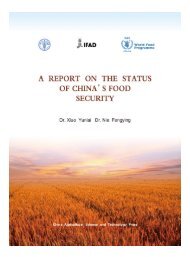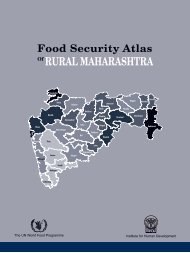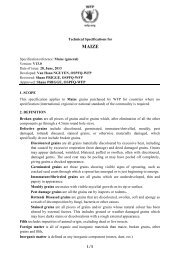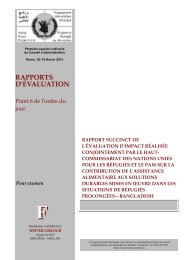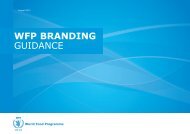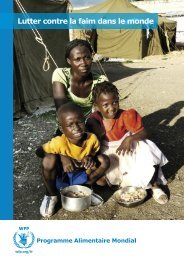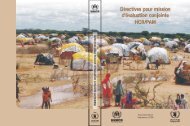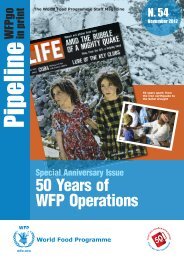Multi-Sectoral Rapid Flood Impact Assessment - WFP Remote ...
Multi-Sectoral Rapid Flood Impact Assessment - WFP Remote ...
Multi-Sectoral Rapid Flood Impact Assessment - WFP Remote ...
You also want an ePaper? Increase the reach of your titles
YUMPU automatically turns print PDFs into web optimized ePapers that Google loves.
Recommendation<br />
• The Road Development Agency should conduct a technical assessment of the<br />
damaged roads, bridges and culverts of economic importance, and develop an<br />
action plan for the repair works to these structures.<br />
• There is need to undertake immediate repair of bridges, culverts and roads<br />
that have been adversely affected by floods to enhance accessibility in the<br />
affected areas.<br />
• There is need to clear canals in some of the districts such as Mumbwa (1),<br />
Namwala (1) and Lukulu (2).<br />
4.2 Water and Sanitation<br />
About 80% of the visited districts reported poor quality of drinking water. This was<br />
attributed to poor water sources such as unprotected shallow wells and/or<br />
rivers/streams which were highly susceptible to faecal contamination as a result of<br />
flooding.<br />
It was also evident that most of the people in the visited districts used unprotected<br />
shallow wells and rivers/streams as their main sources of drinking water. Boreholes<br />
were ranked third in terms of major sources of drinking water especially in the rural<br />
areas. It was only Mkushi, Mambwe, Gwembe, and Luangwa where the main sources<br />
of drinking water for majority of the people were boreholes. The unprotected shallow<br />
wells and rivers/streams were generally located within the vicinity of most<br />
households (less than 500 Km) while the boreholes were located within a radius of 1<br />
km from the homesteads at strategic and central points such as schools and health<br />
centres.<br />
Only 50% of the populations in the affected districts have access to safe drinking<br />
water. The majority of the population (70%) have no sanitary facilities; while 29%<br />
use traditional pit latrines and 1% have access to flush toilets.<br />
The risk of water contamination with faecal matter is high as a result of overflowing<br />
and/or collapsed pit latrines. It is also worth noting that at the time of the<br />
assessment, no major outbreak of water borne diseases was reported. Risk of water<br />
contamination with chemical matter was low in most of the districts, however there<br />
15


